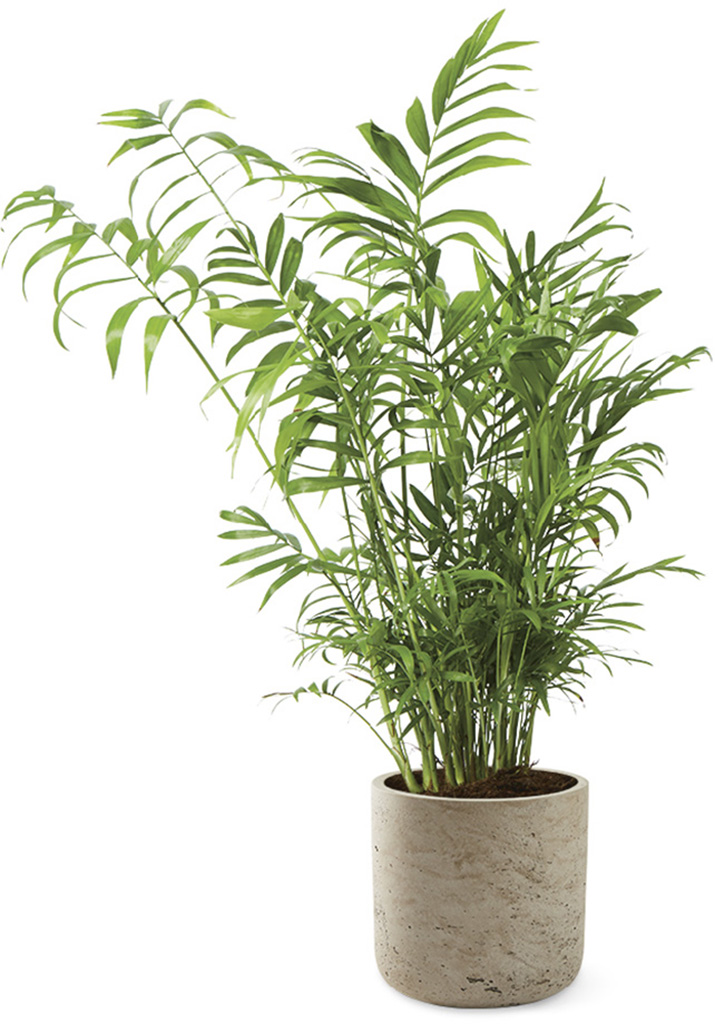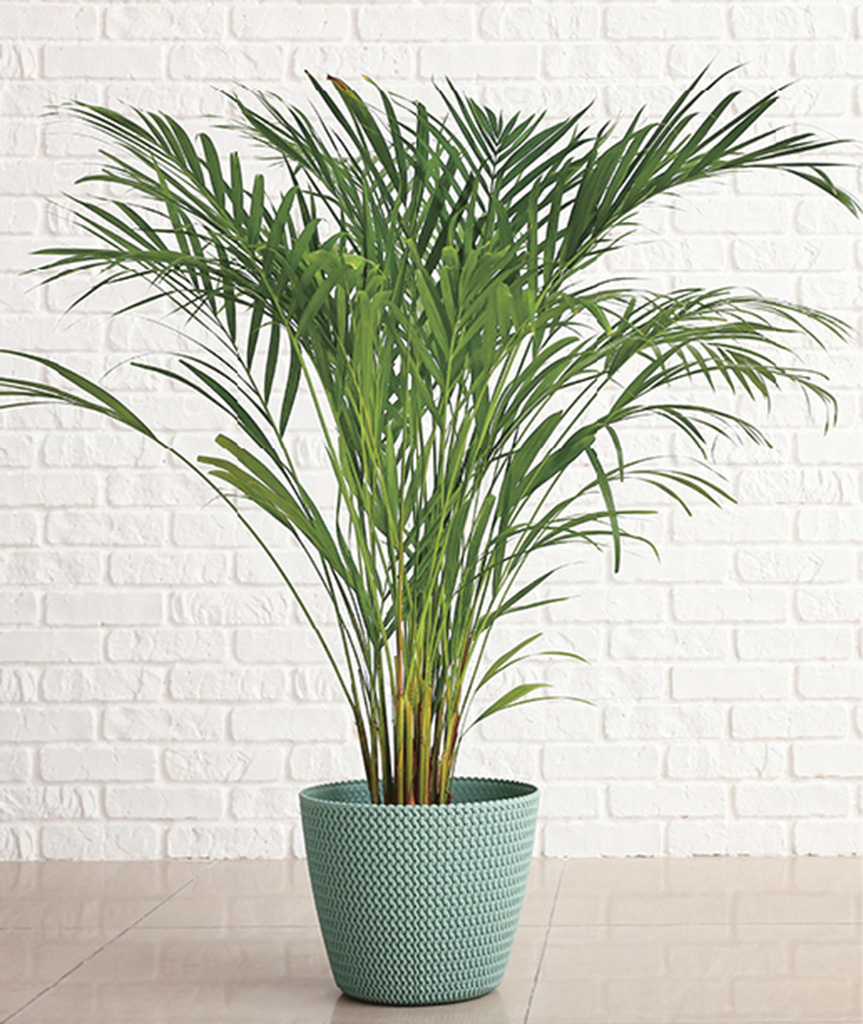PARLOR PALM
CHAMAEDOREA ELEGANS
This elegant, adaptable houseplant can be grown in a bright spot or in shade, hence its undying popularity. It’s easy to place in any home and excellent for purifying air. This is the perfect plant to buy as a gift for someone whose house you’ve never visited before—you just can’t go wrong.
HEIGHT 4ft (1.2m)
SPREAD 24in (60cm)
FLOWERS Unlikely to bloom indoors
FOLIAGE Slender, palmlike
LIGHT Filtered sun/light shade
TEMPERATURE 59–81°F (15–27°C)
CARE Easy
PLACE OF ORIGIN Mexico
CARE
The parlor palm is one of the most popular houseplants. Immensely robust and tolerant, it will thrive in any room, cool north or hot south, and copes with low to moderate humidity. Its upright, feathered foliage offers a classic look that suits almost every style of home.
Choose a generous container for your parlor palm and plant it in a commercial potting mix. Allow the mix to dry out slightly between watering in summer; water sparingly during the winter months. Apply a balanced liquid fertilizer between spring and fall, but stop feeding in winter.
It’s quite normal for a whole frond to sometimes turn brown—if this happens, simply cut it off at the base. Parlor palms are slow-growing plants but, in time, new leaves will form. It will only need repotting every two years, thanks to this slow rate of growth.
It’s rare to see this plant bloom, but when it does, the panicles of small, yellow flowers aren’t really worth the wait as they tend to be quite scruffy.
PROBLEM SOLVING Although mostly problem-free, this palm can attract thrips, scale insects, and red spider mites. The tips of leaves will turn brown if placed in a drafty spot. Remove these with scissors and place your plant somewhere warmer.

The parlor palm is the top pick for a contemporary home with shady rooms.
DISPLAY
This eye-catching architectural plant looks best planted alone in a container. Choose a pot that will complement the style of your interior, and the elegant qualities the plant has to offer. Group it, in matching pots, with other impressive palms, such as sago palm and kentia palm. Create contrast and drama in your display by choosing three palms of different heights.
Houseplants A–Z | PARLOR PALM
ALSO TRY
Palms offer height, reliability, and splendor. If this is the look you’re after, then try some of the lesser-known types—all will look distinctive in the corner of a room:
- Areca palm (Dypsis lutescens), height 6ft 6in (2m). This neat palm is perfect for a tight corner. Its leaves are slightly glossier than those of the parlor palm.
- Fishtail palm (Caryota mitis), height 8ft (2.5m). The serrated foliage of this palm resembles a fishtail. It requires slightly higher humidity than the parlor palm.

The areca palm needs plenty of space, as its foliage arches dramatically.
